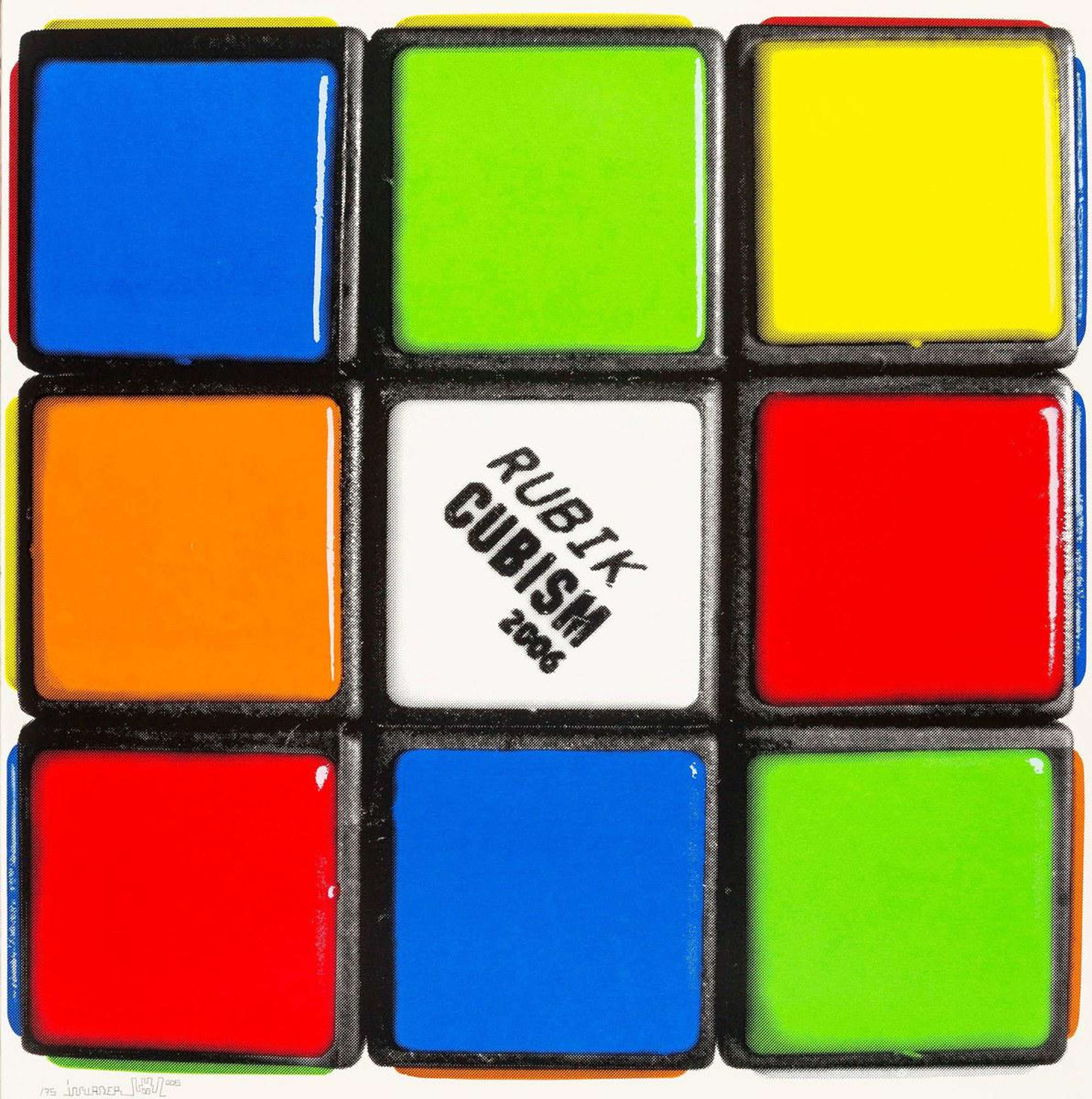
Rubik Cubism

Rubik Cubism
Signed Print
Invader
£3,200-£4,800
$6,500-$9,500 Value Indicator
$6,000-$9,000 Value Indicator
¥30,000-¥45,000 Value Indicator
€3,650-€5,500 Value Indicator
$35,000-$50,000 Value Indicator
¥650,000-¥970,000 Value Indicator
$4,200-$6,500 Value Indicator
There aren't enough data points on this work for a comprehensive result. Please speak to a specialist by making an enquiry.
70 x 70cm, Edition of 75, Screenprint
Auction Results

Track auction value trend
Meaning & Analysis
This signed screen print from 2006 is a limited edition of 75 from Invader’s Rubikcubism series. Here Invader portrays one face of a Rubik's Cube, arranged in a mixed manner so as to show all six colours, the white square in the middle stating Rubik Cubism 2006 in capital letters.
This signed screen print from 2006 is a limited edition of 75 from Invader’s Rubikcubism series. Surprisingly simple in its depiction, the squared print portrays a Rubik's Cube, Erno Rubik’s 3-D combination puzzle invented in 1974. The Cube is made of six faces, each covered by nine stickers which can come in a variation of six colours: white, red, blue, orange, green and yellow. Here Invader portrays only one face of the Cube, arranged in a mixed manner so as to show all six colours, the white square in the middle stating Rubik Cubism 2006 in capital letters.
Rubik Cubes represent perhaps the most well-known puzzle game, with over 400 million cubes sold all over the world, making it the world’s best selling toy and bestselling puzzle game. Though still widely used, the game reached its height of interest throughout the 1980s. Much like the arcade video game Space Invader, from which Invader draws his largest project, here again, the artist draws from the world of popular games popularised throughout the 1980s.
If Repetition, Variation and Evolution represented for Jean Marc Avrilla Invader’s working manifesto for his Space Invader project, the same can be said about this print, where Invader shows the building block and core of his series Rubikcubism, based around the manipulation of the colour combination. Once again, Invader’s creativity and passion for the world of games takes him to engage with pixelation, this time through the coloured stickers of Rubik Cubes.